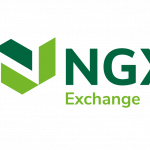Economy
Tether Records Q1 Net Profit of $1.48bn

By Adedapo Adesanya
Tether (USDT) grew rapidly in the first quarter, with its market cap growing from $66 billion to over $82 billion, while it achieved a record net profit of $1.48 billion which brought its reserves surplus to another record high of $2.44 billion.
This buffer is likely to continue growing each quarter, giving users added confidence as it allows Tether to absorb any volatility with ease.
According to its disclosure, “All of the incoming funds collected from tokens’ issuance were invested in either US Treasuries or overnight reverse repo facilities (which are fully collateralized by US Treasuries). In total, there is now $7.5 billion parked in overnight repo facilities, which provides Tether with more extremely liquid collateral while mitigating counterparty risks.”
Tether revealed that the profits, instead of being distributed to shareholders, were fully rolled into reserves to strengthen the stability of Tether for the benefit of users.
Tether’s Q1 profits were more than Blackrock’s by over $300 million dollars. Blackrock has been operating for over 30 years, whereas Tether is only a decade old. Tether profits were also higher than Netflix, Starbucks, CashApp, PayPal, and many other S&P 500 corporations.
Tether said it was able to achieve these milestones while running a fully reserved stablecoin firm, unlike banks that engage in fractional reserve to boost profits. This means when customers want to withdraw their deposits at the same time, there is a bank run and bank failures.
“Tether, in the black swan events of 2022, was able to effortlessly make redemptions of more than $20 billion within 20 days, which no other bank in financial history has been able to process without going bankrupt,” it revealed.
As of Q1, Tether’s treasury direct holdings reached an all-time high of over $53 billion, representing more than 64 per cent of total reserves.
Tether also reduced its bank deposits from $5.3 billion to $481 million in Q1. This provides a substantial reduction in Tether’s exposure to counterparty risk, particularly through bank failures, since these deposits are not concentrated in one bank but rather spread across different banks.
Economy
OPEC+ to Maintain Stable Oil Production Despite Disagreements

By Adedapo Adesanya
The Organisation of the Petroleum Exporting Countries and allies (OPEC+) agreed to maintain stable oil production at its meeting on Sunday, the group said in a statement.
The agreement comes despite political tensions between key members; Saudi Arabia and the United Arab Emirates (UAE), as well as the capture of the president of another OPEC member, Venezuela, by the United States.
Sunday’s meeting of the eight OPEC+ members, which produce about half of the world’s oil, came after oil prices fell more than 18 per cent in 2025, their steepest annual decline since 2020, amid growing fears of oversupply.
The eight countries – Saudi Arabia, Russia, UAE, Kazakhstan, Kuwait, Iraq, Algeria, and Oman – raised their oil production targets by approximately 2.9 million barrels per day from April to December 2025, which is almost 3 per cent of global oil demand.
In November, they agreed to suspend production increases for January, February, and March.
It was reported that Venezuela was not discussed at Sunday’s brief online meeting.
The eight countries will meet next on February 1, the statement said.
Tensions between Saudi Arabia and the UAE escalated last month over the decade-long conflict in Yemen, when a UAE-backed group seized territory from the Saudi-backed government. The crisis triggered the biggest rift in a decade between former close allies, as years of diverging views on critical issues came to a head, the publication writes.
OPEC has in the past managed to overcome serious internal disagreements, such as over the Iran-Iraq war, by prioritizing market management over political disputes.
However, the group faces numerous crises, with Russian oil exports under pressure due to US sanctions over Russia’s war against Ukraine, and Iran facing protests and threats of US intervention, the publication writes.
On Saturday, the US captured Venezuelan President Nicolas Maduro, and US President Donald Trump said the American government would take control of the country until a transition to a new administration was possible, without specifying how this would be achieved.
Venezuela has the world’s largest oil reserves, even larger than those of OPEC leader Saudi Arabia, but the country’s oil production has plummeted due to years of mismanagement and sanctions.
Economy
Nigerian Exchange Begins 2026 Bullish With 0.57% Growth

By Dipo Olowookere
The first trading session of 2026 on the floor of the Nigerian Exchange (NGX) Limited ended on a positive note with a 0.57 per cent growth on Friday.
This was buoyed by renewed appetite for stocks across the key sectors of the market as investors rebalance their portfolios for the new year, especially with the commencement of the controversial tax laws.
Data from Customs Street showed that the banking space advanced by 2.32 per cent, the insurance improved by 2.07 per cent, the energy index expanded by 1.38 per cent, the commodity sector rose by 0.71 per cent, and the consumer goods landscape advanced by 0.21 per cent, while the industrial goods closed flat.
At the close of business, the All-Share Index (ASI) was up by 879.33 points to 156,492.36 points from 155,613.03 points and the market capitalisation went up by N562 billion to N99.938 trillion from Wednesday’s N99.376 trillion.
Yesterday, the quartet of FTN Cocoa, Deap Capital, Mutual Benefits, and ABC Transport chalked up 10.00 per cent each to sell for N5.50, N2.09, N3.41, and N4.51 apiece, while Aluminium Extrusion gained 9.93 per cent to settle at N23.80.
However, Abbey Mortgage Bank declined by 6.25 per cent to N6.00, FCMB shrank by 4.56 per cent to N11.50, Seplat Energy depreciated by 3.43 per cent to N5,610.00, Guinea Insurance lost 2.26 per cent to close at N1.30, and Universal Insurance went down by 1.65 per cent to N1.19.
A total of 440.0 million shares worth N25.0 billion exchanged hands in 40,245 deals during the session compared with the 1.2 billion shares valued at N35.1 billion traded in 27,884 deals in the previous session, representing a surge in the number of deals by 44.33 per cent and a shortfall in the trading volume and value by 63.33 per cent and 28.78 per cent, respectively.
Chams topped the activity table after the sale of 120.3 million units worth N455.1 million, Linkage Assurance traded 21.2 million units valued at N38.3 million, Lasaco Assurance exchanged 19.5 million units for N48.6 million, Aradel Holdings sold 15.6 million units worth N10.7 billion, and Access Holdings transacted 14.3 million units valued at N317.3 million.
Economy
Naira Trades N1,430 Per Dollar at Official Market in First Session of 2026

By Adedapo Adesanya
The Naira closed the first session of 2026 positive against the US Dollar in the Nigerian Autonomous Foreign Exchange Market (NAFEX) as it gained N4.91 or 0.34 per cent to trade at N1,430.85/$1 compared to the previous rate of N1,435.76/$1.
This was a similar trend in the spot market against the Pound Sterling and the Euro on Friday session as the Naira chalked up N8.47 on the British currency to close at N1,925.78/£1 versus Wednesday’s closing rate of N1,934.24/£1 and appreciated against the European currency by N9.64 to quote at N1,678.24/€1 versus N1,687.88/€1.
In the black market window, the Nigerian currency firmed up against the Dollar yesterday by N5 to sell for N,475/$1 compared with the previous rate of N1,480/$1 and improved against the greenback at the GTBank counter by N17 to settle at N1,435/$1 versus the previous value of N1,452/$1.
The appreciation at the market came as demand eased as the year commenced with a positive outlook for the FX market in which the Central Bank of Nigeria (CBN) said reforms will further enhance efficiency and transparency, narrow the premium between the Nigerian Foreign Exchange Market and Bureau de Change rates, and sustain exchange rate stability. In addition, improved domestic oil refining capacity is expected to reduce foreign exchange demand for fuel imports.
The apex bank said that external reserves of Nigeria will climb to $51.04 billion in 2026 from $45 billion in 2025. The reserves are expected to be boosted by reduced pressure in the FX market based on the anticipated rise in oil earnings, sovereign bond issuance, and diaspora remittance inflows.
On inflation, the CBN anticipates that headline inflation will decelerate further to 12.94 per cent in 2026, driven by a combination of factors, and is expected to come down to 10.75 per cent in 2027.
In the cryptocurrency market, Ripple (XRP) rose above $2 for the first time since mid-December, extending a strong start to 2026 as traders pointed to steady spot exchange traded-fund (ETF) inflows and improving regulatory sentiment in the US. However, it closed the day at $1.99 after gaining 6.3 per cent.
Traders reassess the regulatory backdrop after SEC Commissioner Caroline Crenshaw, a staunch critic of crypto spot ETFs, departed, which some market participants viewed as clearing the way for a more crypto-friendly policy stance.
Further, Dogecoin (DOGE) rose by 9.1 per cent to $0.1400, Cardano (ADA) grew by 7.9 per cent to $0.3856, Litecoin (LTC) jumped by 2.5 per cent to $81.37, and Solana (SOL) added 2.4 per cent to trade at $130.35.
In addition, Ethereum (ETH) appreciated by 1.8 per cent to close at $3,077.46, Binance Coin (BNB) expanded by 0.7 per cent to sell for $871.01, and Bitcoin (BTC) increased by 0.6 per cent to $89,461.15, while the US Dollar Tether (USDT) and the US Dollar Coin (USDC) closed flat at $1.00 each.
-

 Feature/OPED6 years ago
Feature/OPED6 years agoDavos was Different this year
-
Travel/Tourism9 years ago
Lagos Seals Western Lodge Hotel In Ikorodu
-

 Showbiz3 years ago
Showbiz3 years agoEstranged Lover Releases Videos of Empress Njamah Bathing
-

 Banking8 years ago
Banking8 years agoSort Codes of GTBank Branches in Nigeria
-

 Economy3 years ago
Economy3 years agoSubsidy Removal: CNG at N130 Per Litre Cheaper Than Petrol—IPMAN
-

 Banking3 years ago
Banking3 years agoFirst Bank Announces Planned Downtime
-

 Banking3 years ago
Banking3 years agoSort Codes of UBA Branches in Nigeria
-

 Sports3 years ago
Sports3 years agoHighest Paid Nigerian Footballer – How Much Do Nigerian Footballers Earn
























